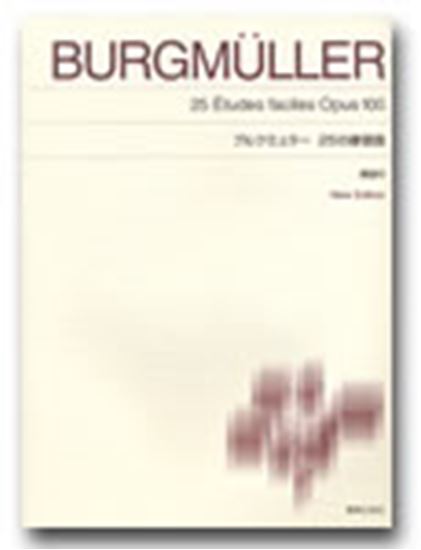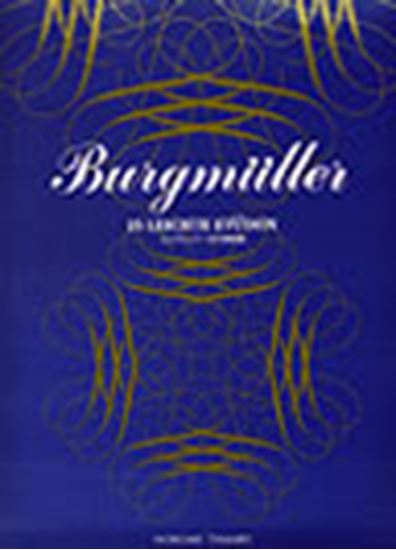Burgmüller, Johann Friedrich Franz : 25 Etudes faciles et progressives, conposées et doigtées expressément pour l'étendue des petites mains La pastorale Op.100-3
Work Overview
Genre:pastorale/Idyll
Total Playing Time:1 min 30 sec
Copyright:Public Domain
Additional Notes:表記ゆれの例: パストラル パストラール
Commentary (3)
Author : Ooi, Kazurou
Last Updated: October 17, 2022
[Open]
Author : Ooi, Kazurou
While there are many approaches, the author connects the accompaniment figures in this piece with the pedal. The first beat of the melody line in this piece is often a dotted quarter note, and since this note is a constituent tone of the chord, it is permissible to sustain the pedal through the first beat. The second beat of the melody line is often a scale or arpeggio, so if clarity is a concern, one might consider using the pedal sparingly or not at all.
In any case, the left-hand accompaniment figures contain many notes, and if not played pp, they will obscure the right-hand melody. Therefore, it is important to practice so that the chord tones do not disappear even when played softly. Performances where the repeated chords on the first beat are played staccato are often observed. While not denying this approach, the author does not consider the piece itself to be particularly disjunct or dance-like, and thus prefers to connect it smoothly with the pedal. Please try various approaches.
Furthermore, two important points for performing this piece are outlined below:
1. How to Play the Opening Two Measures
The piece begins with a right-hand solo, and how these two measures are performed will significantly alter the character of the entire piece. Above all, avoid playing mechanically or rigidly, and do not make it flat. Instead, use rubato, play improvisationally, and with a singing quality.
2. How to Play Measures 23-26
This is where the piece reaches its peak. It is the most crucial section in the entire work. Do not hesitate to build a crescendo and reach forte. A slight broadening (a slight decrease in tempo) is also highly desirable here.
Author : Sato, Takashi
Last Updated: January 31, 2022
[Open]
Author : Sato, Takashi
"Pastorale" means "pastoral" or "rustic," and after Beethoven's Symphony No. 6 "Pastoral," it came to be used as a motto for "depiction of nature," one of the ideal concepts of the Romantic era. Its characteristic feature is the "pedal point" (or "sustained bass") that represents a vast, continuous pastoral landscape. In this piece, the tonic (G) is sustained from measures 3-8, and the dominant (D) is sustained from measures 11-14 (though not in the bass voice). The points where these sustained notes disappear, measures 10 and 15, are where the music undergoes significant movement. Also, fully appreciate the expansive sound of the dominant in the subdominant key at measure 23 during the recapitulation.
Performance Points (Original tempo ♩. =66)
For the opening right-hand solo, imagine the legato of string instruments. From measure 3 onwards, be aware of the 4-measure phrase units and try to sing freely, like a shepherd's song. This piece allows you to master the fundamental Romantic melodic singing style that leads to Mendelssohn's "Songs Without Words." The repeated chords in the left hand should never be staccato. Achieve a soft "WAWAWAWA~" sound with a delicate touch, gently pressing down and allowing the key's weight to lift your finger. The left hand at measure 15 and the right hand at measure 16 should converse with each other.
(From To-on Edition "Burgmüller 25 Etudes" (NS70))
Author : Iida, Arisa
Last Updated: March 15, 2018
[Open]
Author : Iida, Arisa
Musical example provided by: Ongaku no Tomo Sha
PTNA & Partner Channel Videos(25items) View More
Sheet MusicView More
Scores List (27)

(株)東音企画(バスティン)

(株)東音企画(バスティン)

(株)東音企画(バスティン)

(株)全音楽譜出版社

(株)全音楽譜出版社

(株)全音楽譜出版社

(株)ドレミ楽譜出版社

(株)音楽之友社

KMP(ケイ・エム・ピー) ケイエムピー

(株)ドレミ楽譜出版社

ハンナ(ショパン)

(株)ヤマハミュージックエンタテインメントホールディングス

デプロMP

(株)ドレミ楽譜出版社

(株)全音楽譜出版社

(株)ドレミ楽譜出版社

カワイ出版

カワイ出版

デプロMP

(株)ヤマハミュージックエンタテインメントホールディングス

デプロMP

(株)ドレミ楽譜出版社

(株)音楽之友社

(株)共同音楽出版社

Neil A. Kjos Music Company




















